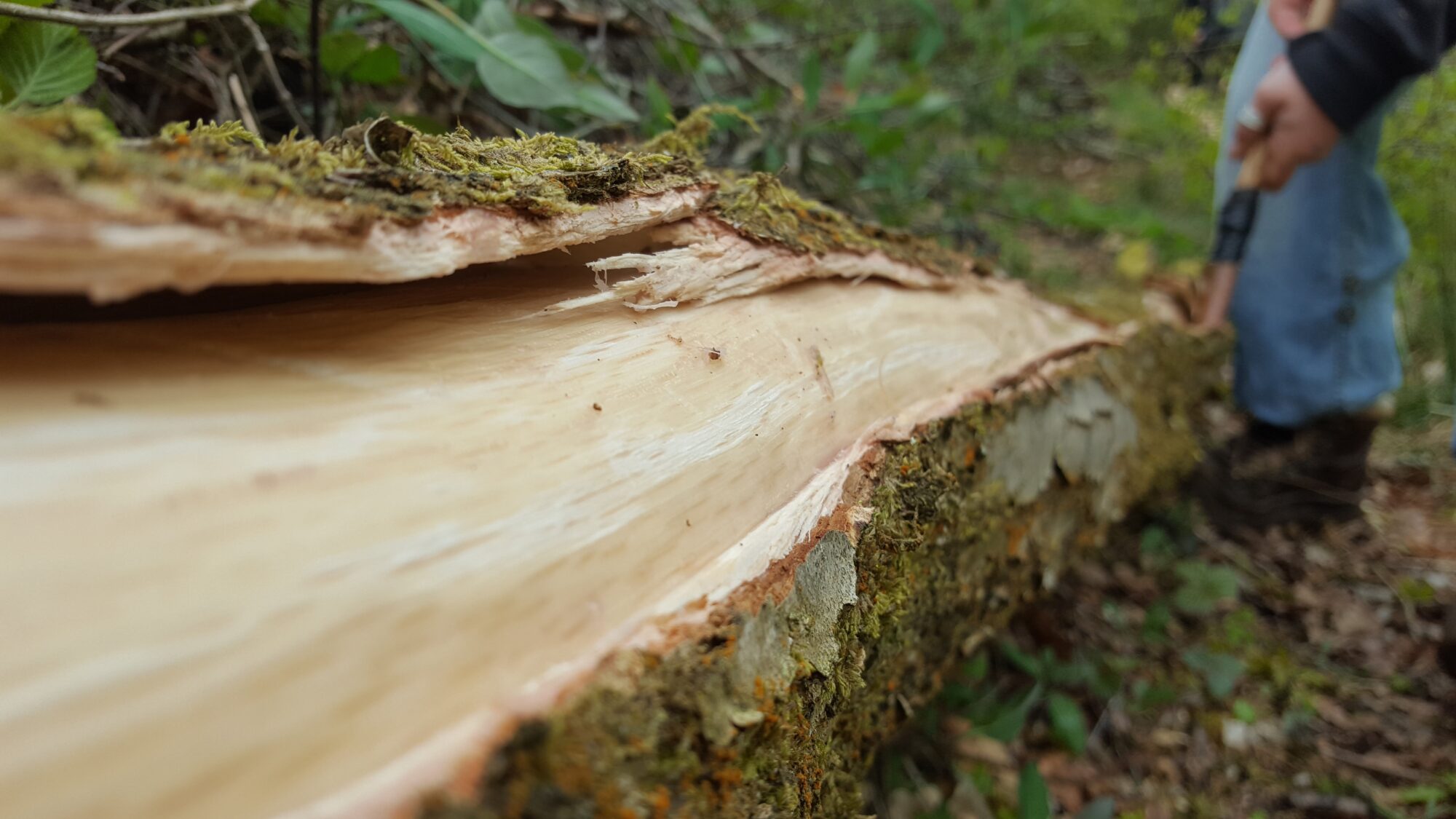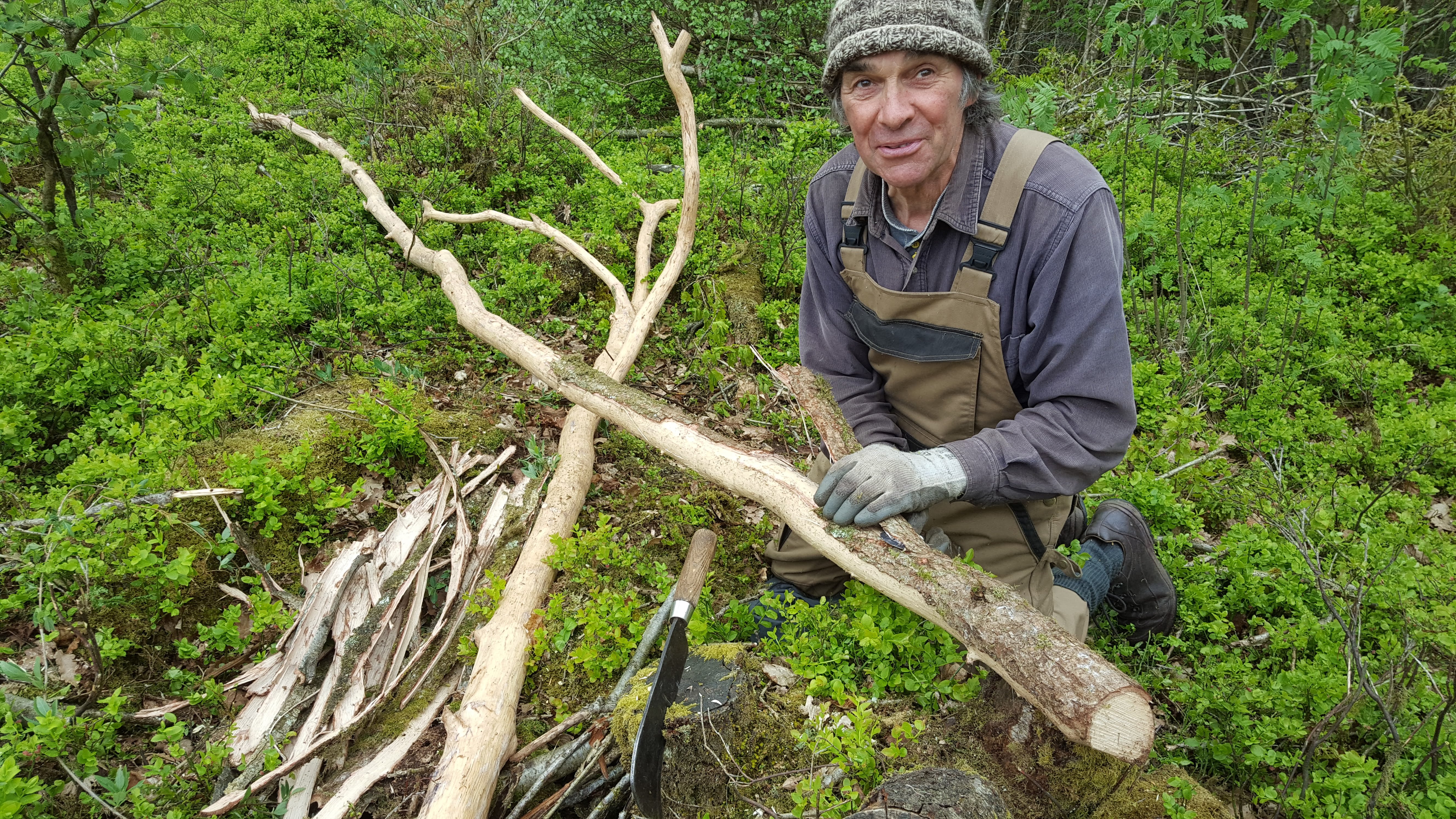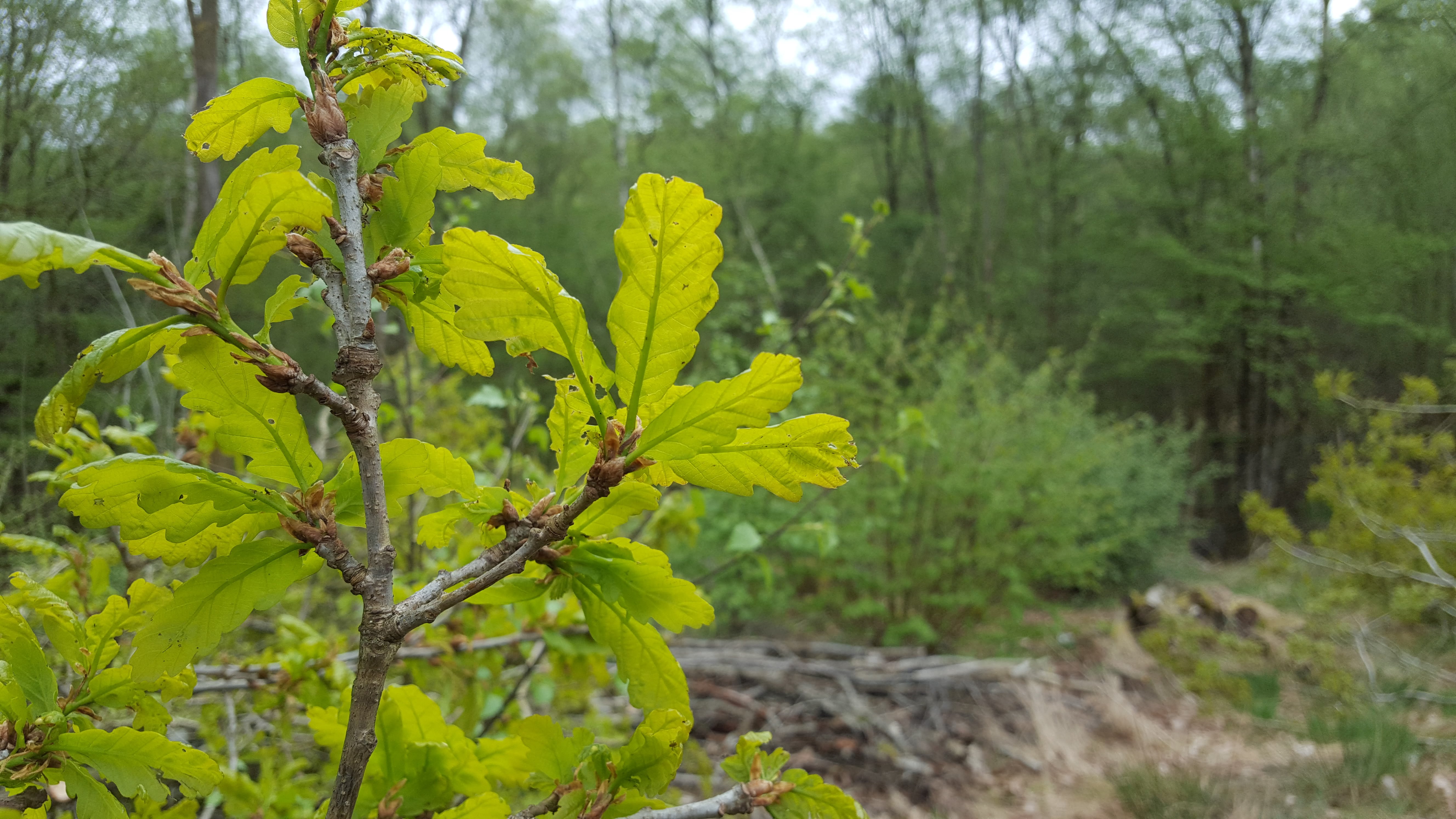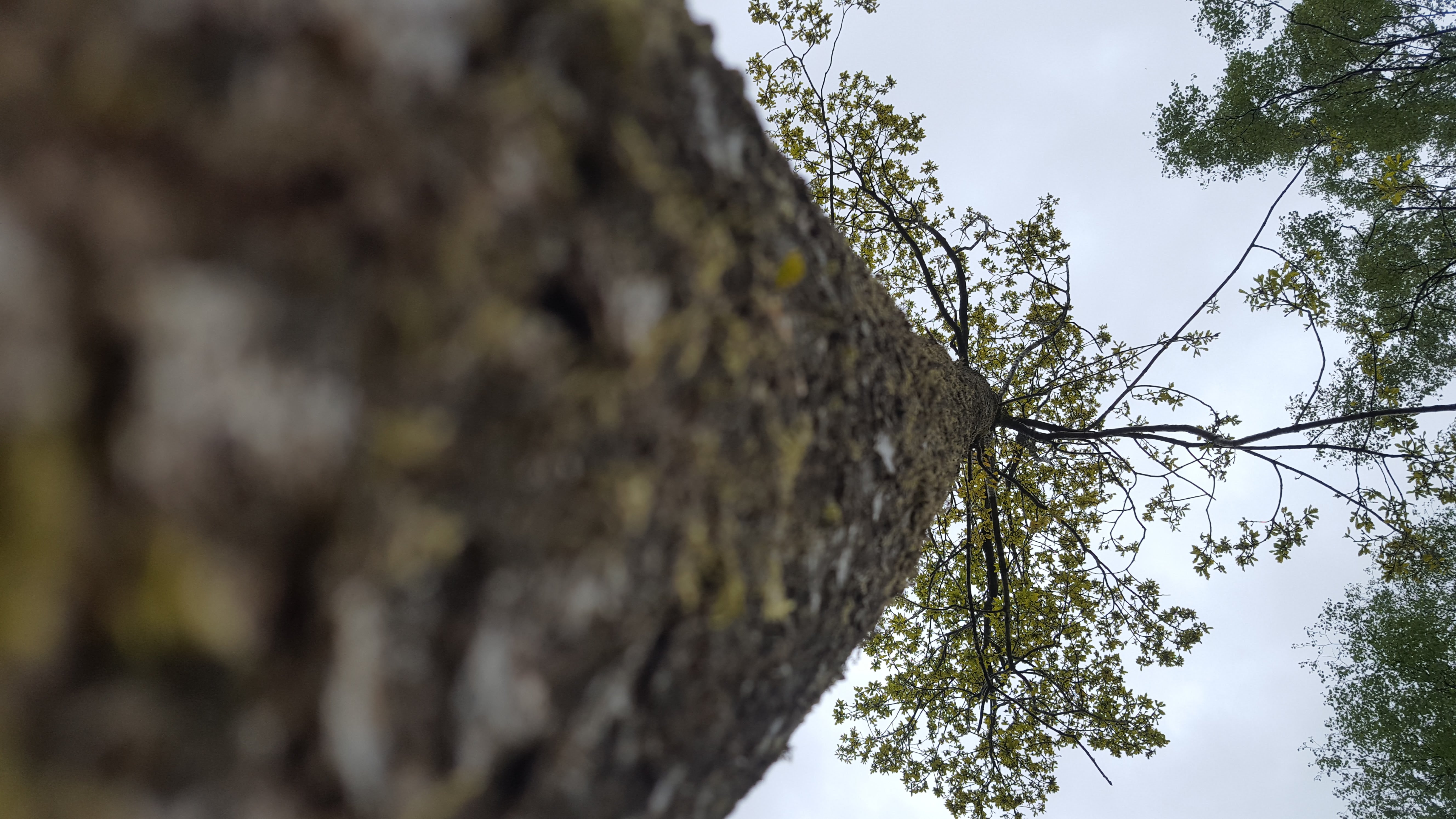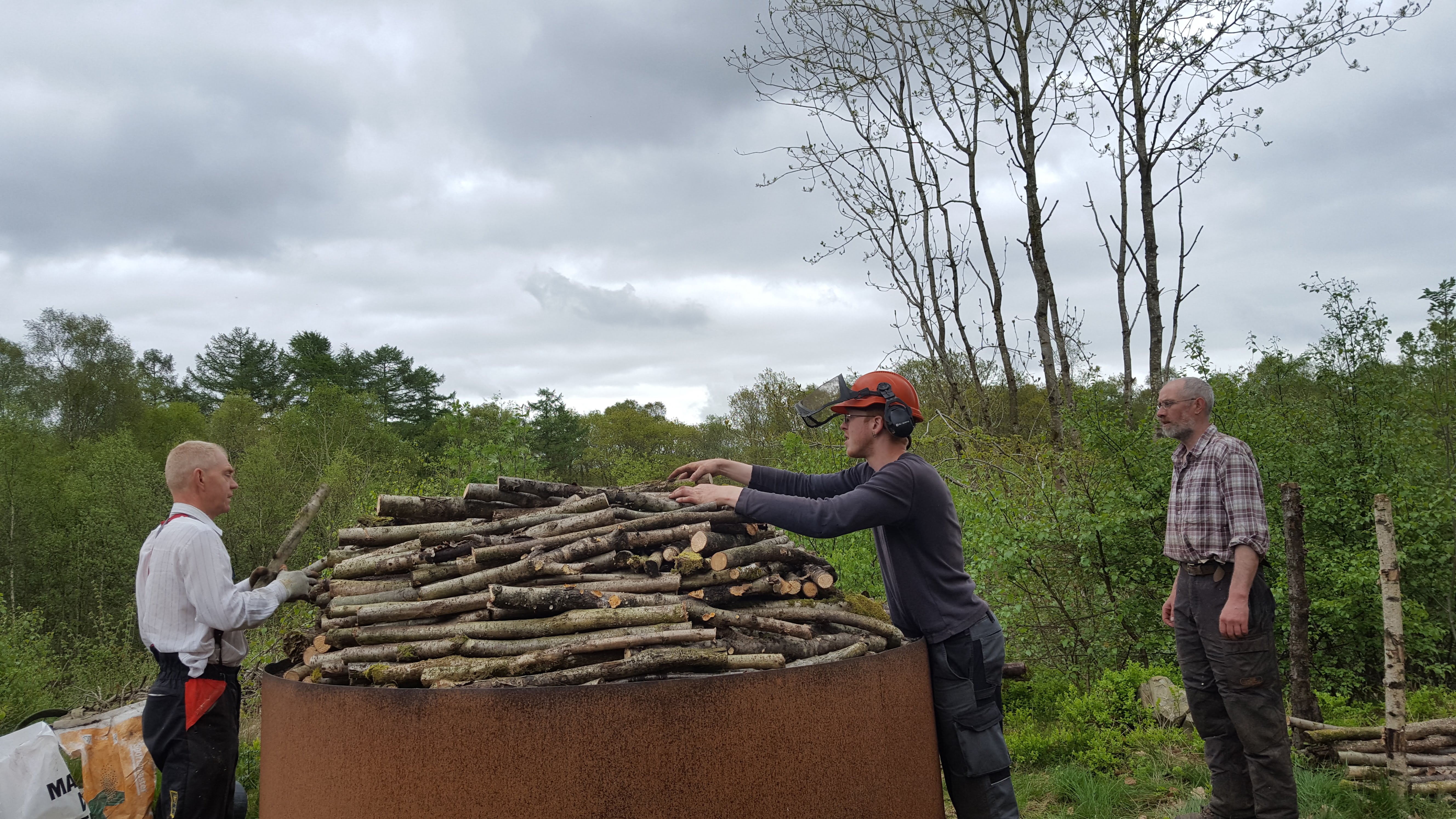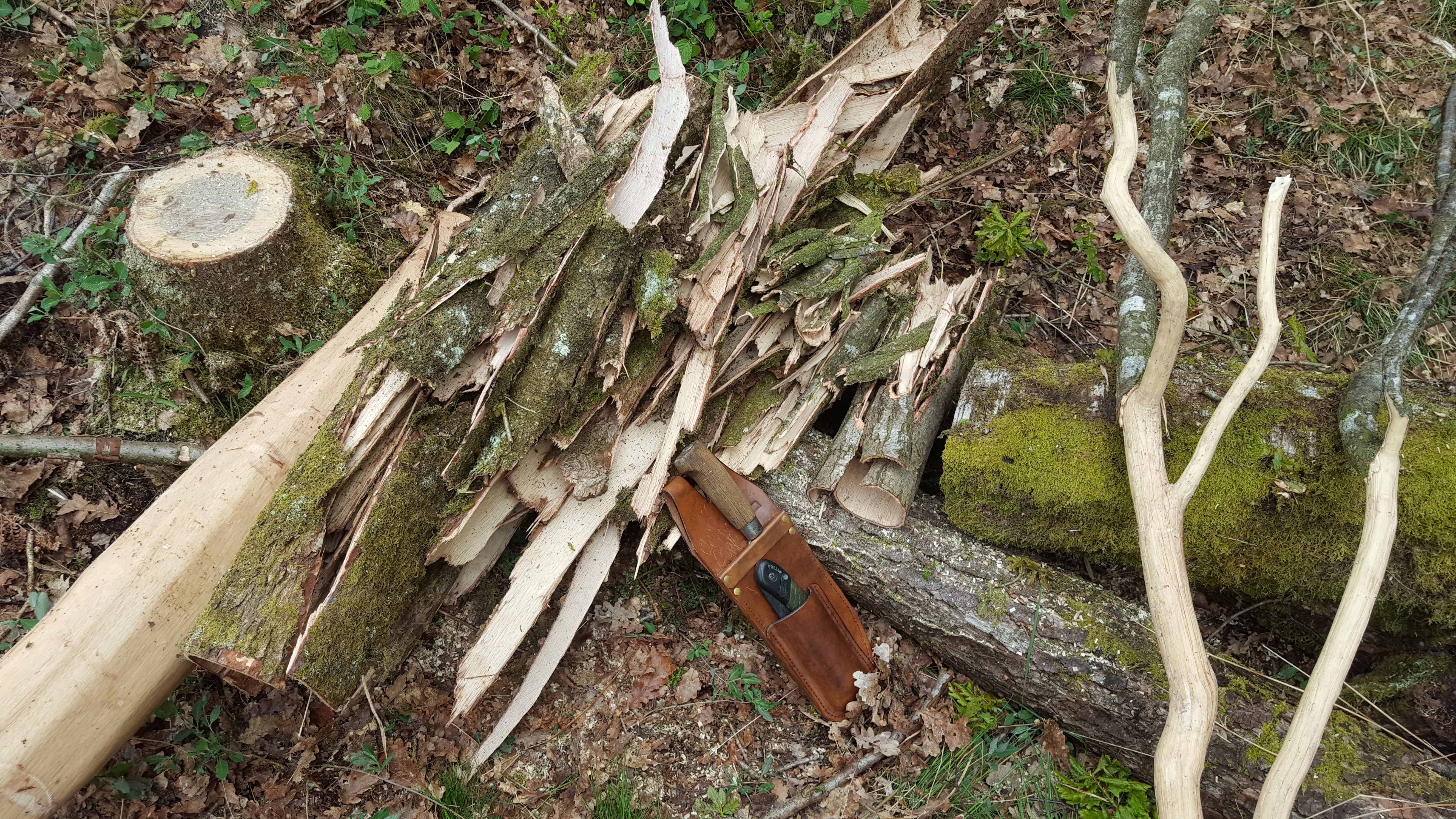I went into the woods today and peeled some oak.
Every year, about this time, as the new growth starts to sprout and the sap is rising, woods people gather in Cumbria to peel oak bark to send to the tannery in Devon (the only one still using oak bark commercially).
The happens in a coppiced “coup”, which is an area of broadleaf woodland that is periodically harvested for its wood. Each tree that is cut down grows back by sending new shoots from the roots and stool of the tree. Typically, a coppiced woodland would contain oak, hazel, ash, birch alder and elm. It’s these species that make this practice very different to the clear felling plantation woodlands, where all the tree need to be replanted after harvesting. Coppicers work with nature, continuing a practice that’s been carried out in Britain since the Middle Ages.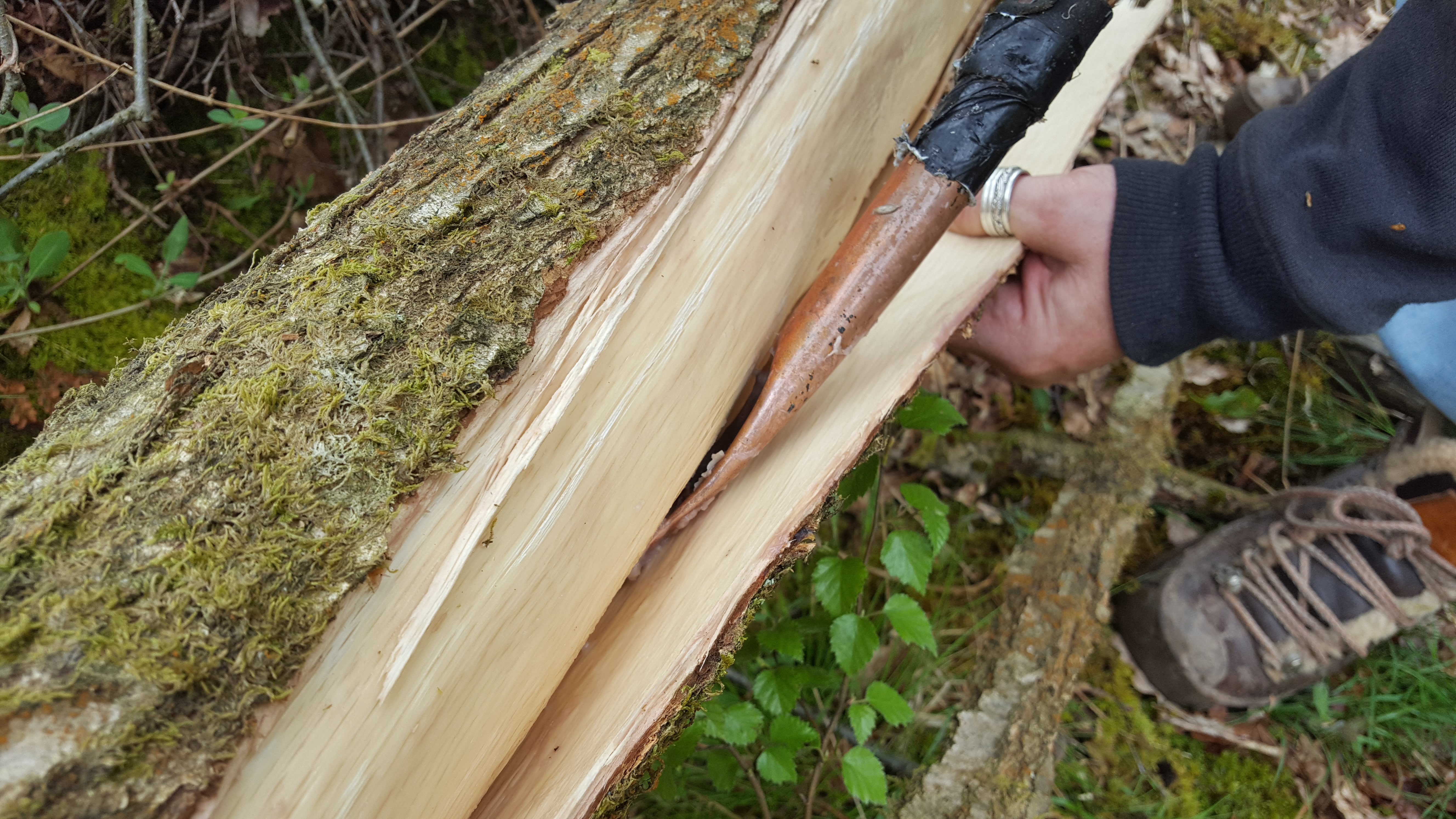 My wife and I use bent copper pipe to slide under the bark. This doesn’t damage the wood underneath and allows the bark to be pulled away without cutting it.
My wife and I use bent copper pipe to slide under the bark. This doesn’t damage the wood underneath and allows the bark to be pulled away without cutting it.
Coppicing mostly takes place over winter, when the sap is down and there’s little growth to get in the way of working. But when you want to peel oak you need to time it right. May and June are usually the best time of year, but a combination of sunshine, rain and the phase of the moon seem to make a difference to how well the bark peels.
This is Edward (above), and Brian and Ian (below) – long standing members of the Coppice Association North West who organise these events. A nicer group of people you won’t meet. I love spending the day working with these knowledgeable and fun folk.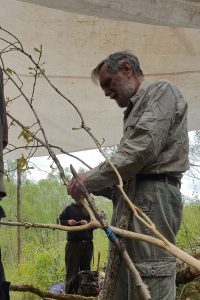
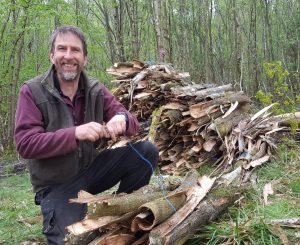
Each oak trunk is carefully cut with a sharp chainsaw to ensure the stool (the roots) remain healthy. They’ll start growing again this summer and will be ready to harvest again in maybe 15 years.
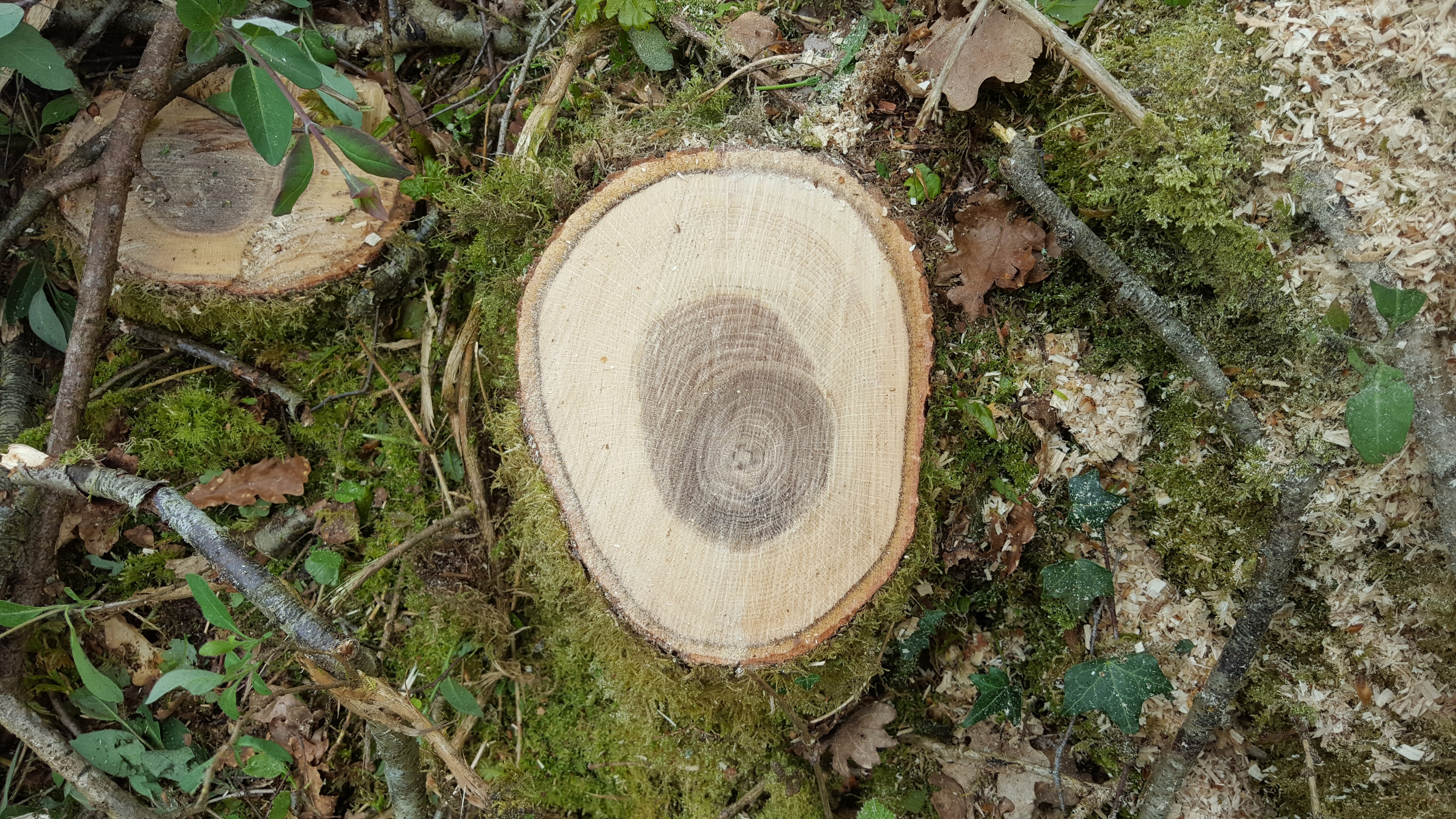
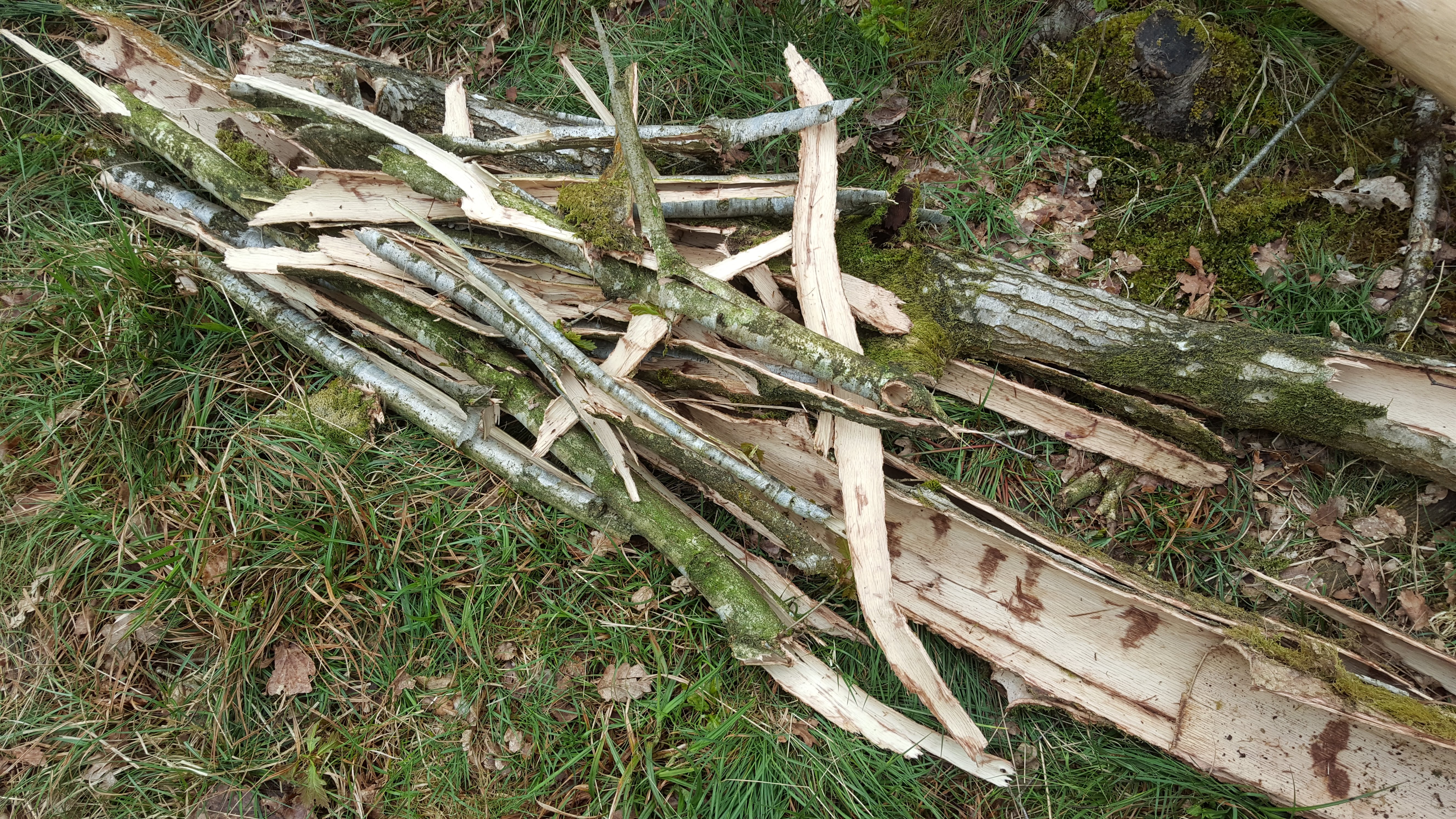 Here’s the bark taken from one large 4 metre length of trunk and its attached branches.
Here’s the bark taken from one large 4 metre length of trunk and its attached branches.
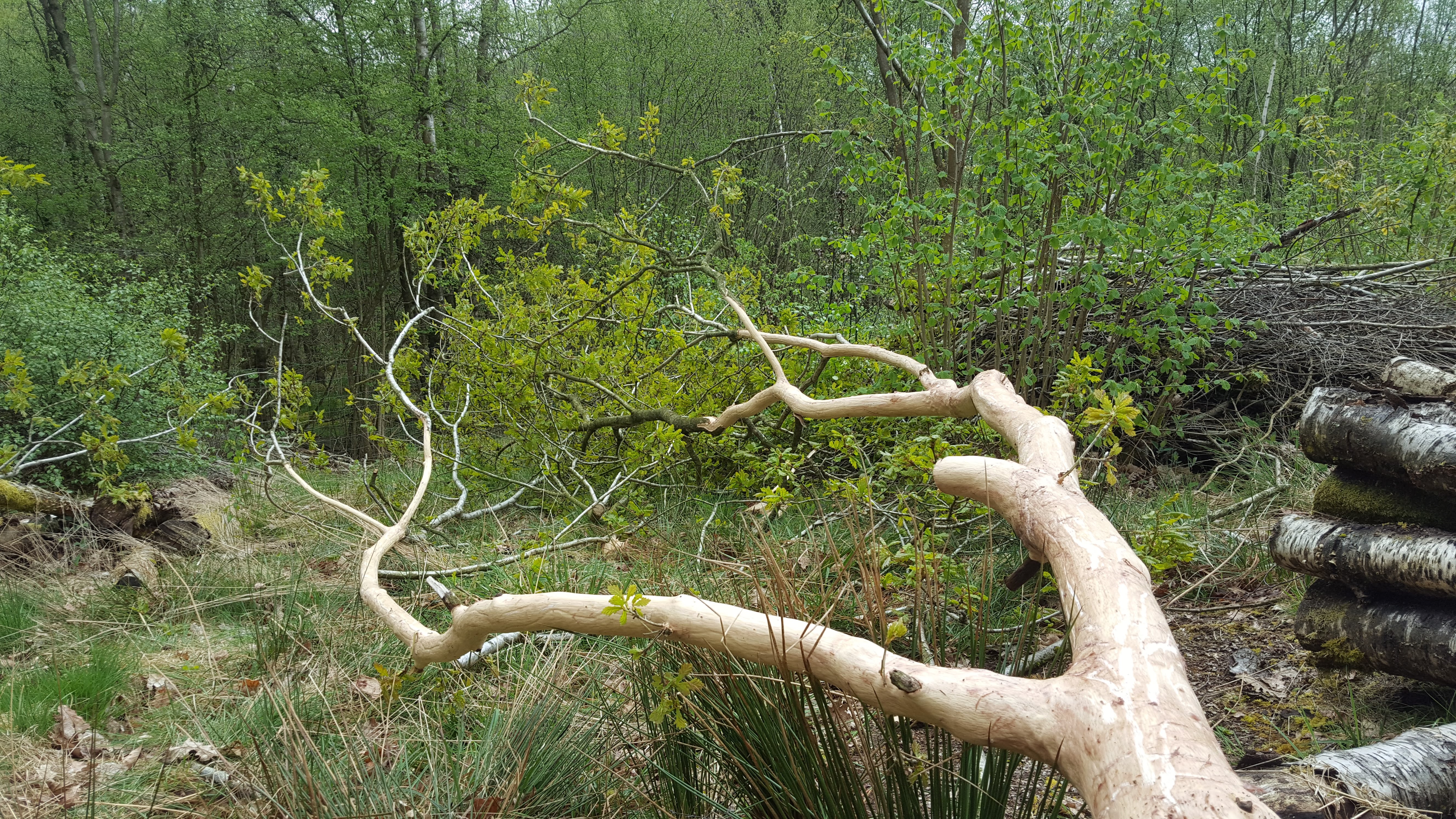 The peeled oak is used for furniture and bird tables. Anything left over is sold as firewood or turned into charcoal, to be sold to BBQ lovers.
The peeled oak is used for furniture and bird tables. Anything left over is sold as firewood or turned into charcoal, to be sold to BBQ lovers.
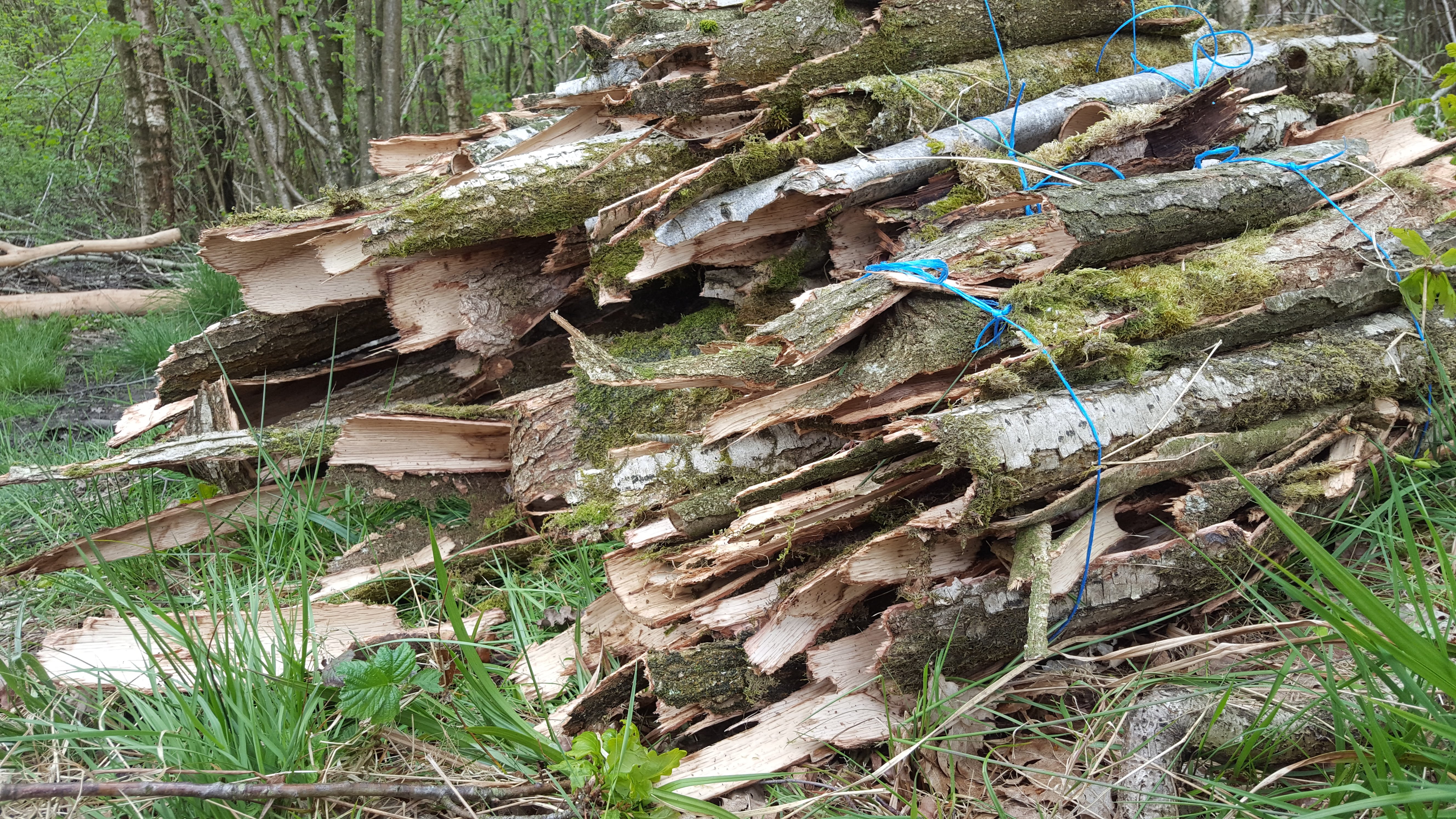 Above is half a day’s peelings. This is transported to somewhere undercover to dry. Then later in the year the tannery will send a flatbed truck to pick up the bark from all the coppice workers in the area.
Above is half a day’s peelings. This is transported to somewhere undercover to dry. Then later in the year the tannery will send a flatbed truck to pick up the bark from all the coppice workers in the area.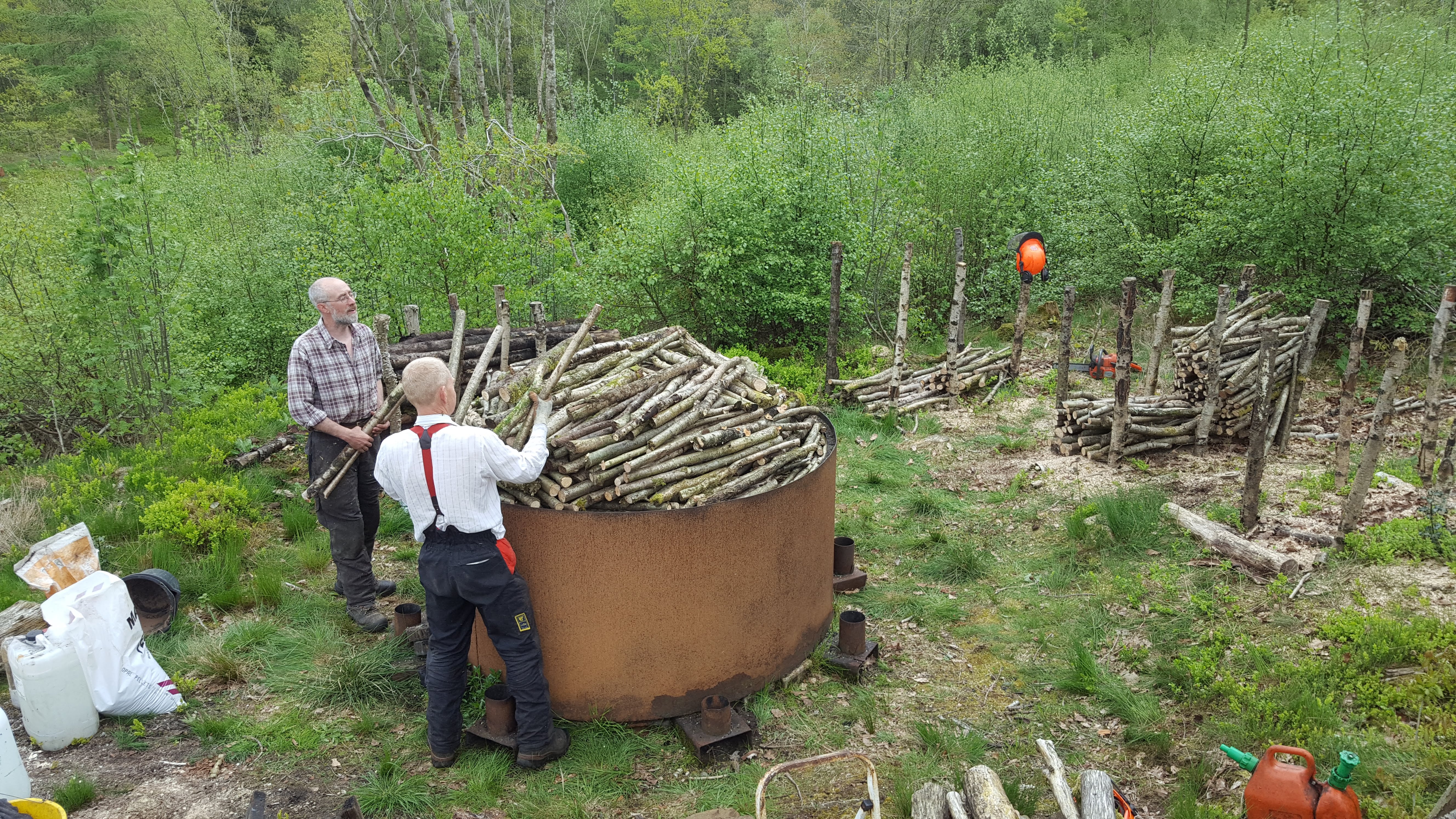 Mike, Dan and John, loading the charcoal kiln with unused and unsuitable wood.
Mike, Dan and John, loading the charcoal kiln with unused and unsuitable wood.
See my Bodger Morgan blog about a visit to the tannery a couple of years ago: A visit to Bakers oak bark tannery
Discover more from MORGAN LEATHER
Subscribe to get the latest posts sent to your email.

